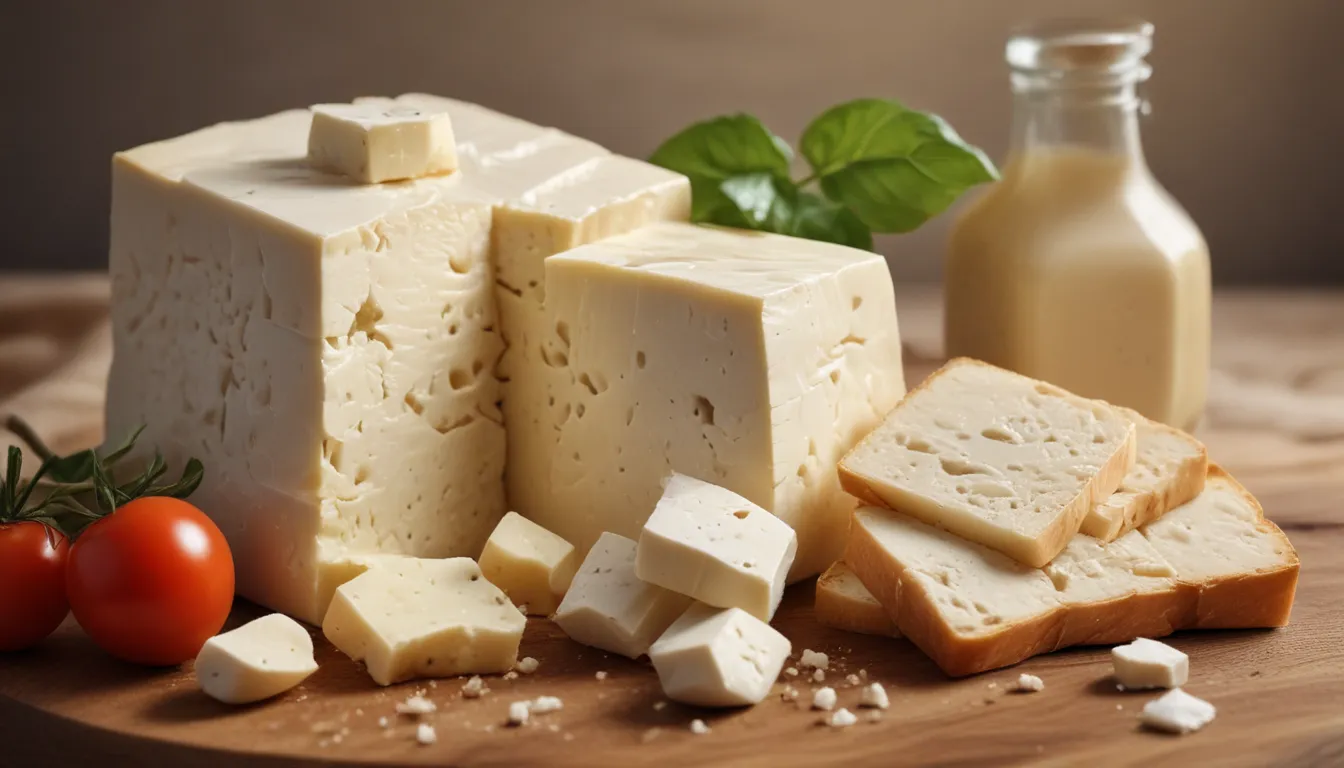The pictures in our articles might not always show exactly what the text is talking about. We use these images to make the article more interesting and eye-catching. They are there to add to the text, but not to replace it or show every detail.
Are you a cheese enthusiast looking to expand your knowledge? Or perhaps you're a fan of Greek cuisine seeking to uncover the secrets of feta cheese? Look no further! In this article, we invite you to join us on a flavorful journey through the world of feta cheese, a beloved dairy delight with ancient origins and modern appeal. From its traditional roots in Greece to its versatile uses in Mediterranean dishes, feta cheese continues to captivate taste buds around the globe. So grab a slice of crusty bread, drizzle on some olive oil, and let's explore 18 intriguing facts about this creamy and crumbly cheese that will leave you craving for more.
Discovering the Essence of Feta Cheese
1. A Taste of Greece: Feta’s Traditional Roots
Feta cheese is deeply rooted in Greek culture and has been a culinary cornerstone for centuries. Made from sheep's milk or a blend of sheep and goat's milk, feta's tangy and salty flavors reflect the essence of Mediterranean cuisine.
2. Protected by Tradition: Feta’s PDO Status
In 2002, the European Union bestowed Protected Designation of Origin (PDO) status upon feta cheese, safeguarding its authenticity and ensuring that only cheeses crafted in specific regions of Greece can bear the label of "Feta."
3. Crumbly meets Creamy: Feta’s Unique Texture
What sets feta cheese apart is its delightful combination of crumbly and creamy textures. This distinct texture, coupled with its tangy taste, lends itself well to a myriad of culinary creations.
4. Brine-Aged Goodness: The Secret of Feta’s Flavor
Feta cheese undergoes a brining process after being formed into blocks, allowing it to develop its signature salty taste. This aging method not only enriches the cheese's flavor but also aids in its preservation.
5. Versatile Delights: Feta in Culinary Creations
From salads to sandwiches, feta cheese adds a creamy and tangy touch to various Mediterranean dishes. Its versatility in sweet and savory recipes makes it a cherished ingredient in kitchens worldwide.
Embracing the Nutritional Benefits of Feta Cheese
6. Calcium-Rich Goodness: Feta’s Bone-Boosting Properties
Enjoying feta cheese not only tantalizes your taste buds but also provides a significant dose of calcium, essential for maintaining strong bones and teeth.
7. Probiotic Powerhouse: Feta’s Gut-Friendly Bacteria
As a fermented cheese, feta contains probiotics that support digestive health by introducing beneficial bacteria to your gut. Embrace feta for a happy tummy!
8. Lactose-Friendly Fare: Feta for the Lactose Intolerant
Good news for lactose-intolerant individuals—feta cheese is naturally lower in lactose than other cheeses, making it a suitable option for those with sensitivities.
9. Goat’s Milk Variants: Feta’s Diverse Origin
While traditional feta is crafted from sheep's milk, variations made with goat's milk or a blend of goat and sheep's milk offer a unique twist on this classic cheese.
Culinary Delights with Feta Cheese
10. Salad Sensation: Feta in Greek Salads
Greek salads wouldn't be the same without the savory addition of feta cheese. Its salty and tangy notes perfectly complement the fresh vegetables and olive oil dressing.
11. Storage Tip: Keeping Feta Fresh
To preserve the flavor and texture of feta cheese, it is best stored in its brine. This simple storage method helps maintain its quality and prevents it from drying out.
12. Protein-Packed Goodness: Feta’s Nutritional Value
Beyond its delicious taste, feta cheese offers a generous serving of protein, crucial for tissue repair and muscle building in the body.
Exploring the Culinary Versatility of Feta Cheese
13. Traditional Practices: Feta’s Time-Honored Techniques
The production of feta cheese adheres to traditional cheese-making methods passed down through generations. This dedication to authenticity ensures the cheese's distinctive flavor and quality.
14. Sweet and Savory Pairings: Feta with Fruits
The harmonious blend of feta cheese with fruits like watermelon, figs, or grapes creates a delightful flavor contrast, making it a popular choice for cheese platters and desserts.
15. Key Ingredient: Feta in Spanakopita
Spanakopita, a beloved Greek dish featuring layers of flaky phyllo pastry filled with spinach and creamy feta cheese, showcases feta's versatility in savory recipes.
16. Sweet Surprises: Feta in Desserts
While feta is commonly associated with savory dishes, its creamy texture and tangy flavor also lend themselves well to sweet creations. Experiment with feta in pastries or pair it with honey for a unique culinary experience.
17. Crumbled or Sliced: Feta’s Culinary Presentation
Whether crumbled over salads for a rustic touch or sliced for an elegant presentation, feta cheese offers versatility in both appearance and flavor in various dishes.
18. Global Delight: Feta’s Worldwide Appeal
With its distinct flavor and culinary adaptability, feta cheese has garnered popularity across the globe, becoming a cherished ingredient in diverse cuisines and international recipes.
Conclusion
Feta cheese stands as a culinary gem in Mediterranean cuisine, embraced for its rich flavors, creamy textures, and nutritional benefits. In this exploration of 18 captivating facts about feta cheese, we've unveiled the cheese's Greek heritage, culinary applications, and health advantages. Whether paired with fresh vegetables, baked into pastries, or enjoyed on its own, feta cheese promises to elevate any dish with its distinctive charm.
Frequently Asked Questions (FAQs)
- What is feta cheese?
-
Feta cheese is a crumbly white cheese originating from Greece, typically made from sheep's milk or a blend of sheep and goat's milk, known for its tangy flavor.
-
Can feta cheese be used in cooking?
-
Absolutely! Feta cheese is incredibly versatile and can be incorporated into a wide range of dishes, from salads and pastas to baked goods and savory pies.
-
How should feta cheese be stored?
-
To maintain the freshness of feta cheese, store it in the refrigerator, preferably in its brine or tightly wrapped in plastic wrap to prevent dryness.
-
What are some popular dishes featuring feta cheese?
-
Feta cheese shines in traditional Greek dishes like Greek salad, spanakopita, and tiropita, as well as in modern recipes such as salads, omelets, and fruit pairings.
-
Can feta cheese be substituted with other cheeses?
- While the unique flavor of feta cheese is hard to replicate, alternatives like goat cheese, queso blanco, or crumbled blue cheese can be used based on taste preferences and recipe requirements.
As you delve into the delectable world of feta cheese, remember to savor each bite and appreciate the rich heritage and culinary versatility that this beloved cheese offers. Whether sprinkled over a salad or melted into a dish, feta cheese adds a delightful burst of flavor to every meal. Enjoy the journey through feta cheese's fascinating realm, and may your culinary adventures be filled with joy and gastronomic delights!






